Crank up the heat with this amazing homemade gochujang jjigae. This easy Korean gochujang stew is spicy, savoury, satisfying, and on the table in just 20 minutes.
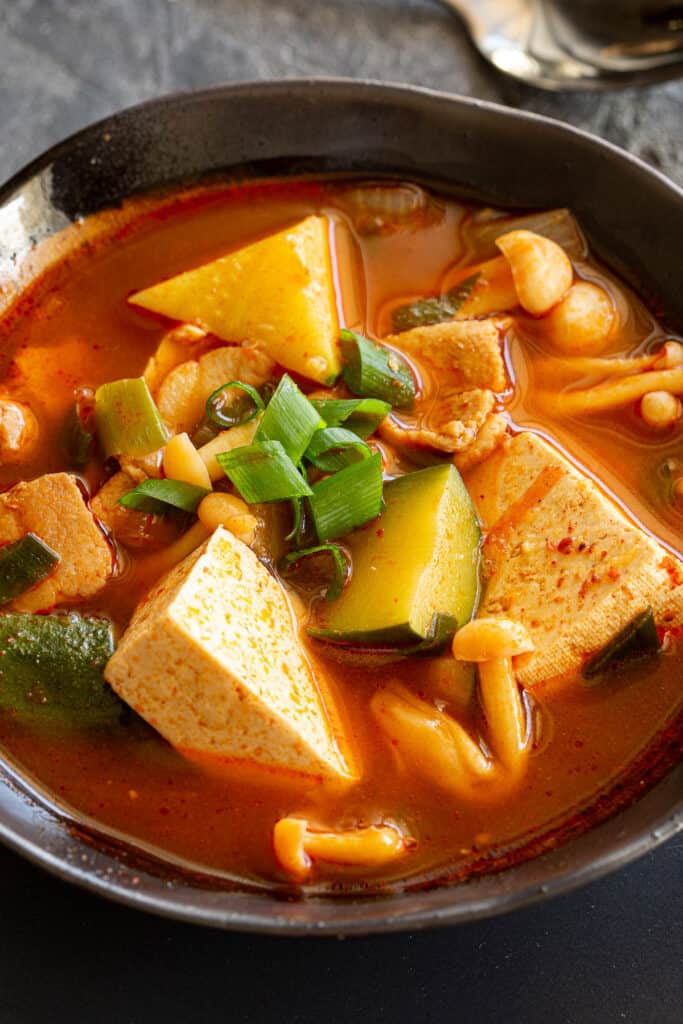
In This Post You’ll Learn
Why We Love This
Gochujang jjigae is packed with rich flavour and spicy heat, perfect for warming up when the weather turns colder.
It’s such a satisfying stew, yet light and refreshing without leaving you feeling heavy!
This amazing recipe is one of our favourite ways to use up leftover veggies as well as that tub of gochujang in your fridge.
Related: Korean Army Stew / Gochujang Pasta
Make it vegan!
This stew is easily made vegan by omitting the pork belly. Simply skip that step, and if you feel like it needs it, swap the water for vegetable stock instead. Simple!
You could also serve it alongside our Japanese tofu patties.
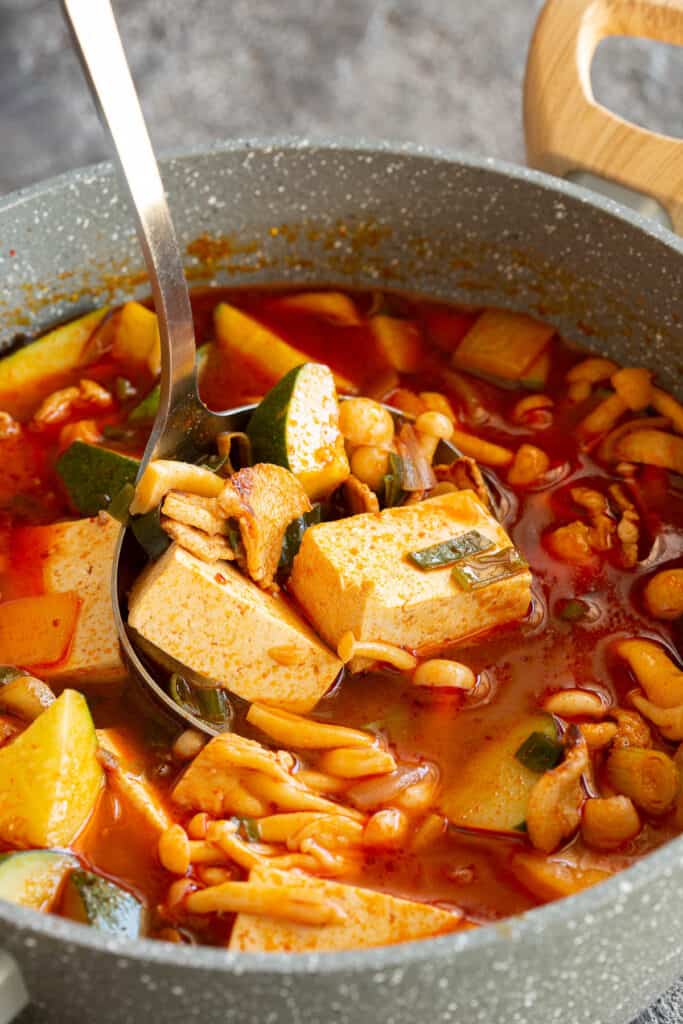
What is Gochujang Jjigae?
Gochujang jjigae / 고추장찌개 is a spicy Korean stew made from a base of gochujang chilli paste seasoned with gochugaru chilli flakes, soy sauce and sugar.
There are lots of varieties of jjigae or stews in Korean cuisine and they’re often named after a key ingredient or seasoning in the broth, such as dubu jjigae (tofu stew) or kimchi jjigae (kimchi stew).
Gochujang jjigae is commonly made with veggies such as sliced zucchini and potato, along with thinly sliced pork belly. But at home you can adapt the recipe to use up whatever you have in the fridge.
What You’ll Need
- Pork Belly – You can use thick or thin slices, chopped into strips. Slice off any large, thick sections of fat if you prefer. Sub with chicken, beef, or leave it out completely to make it vegan and vegetarian friendly.
- Veggies – Today we’re using zucchini, onion, potatoes, spring onion / green onion, garlic and mushrooms such as enoki or shimeji.
- Tofu – Firm tofu is great for extra protein in this dish! It also holds together well and won’t turn to mush in the stew.
- Gochujang / Korean Hot Pepper Paste – One of the key flavours in Korean cuisine. While it is spicy, it has more of a well-rounded, sweet tomato flavour rather than just pure chilli heat. (Note: You can buy an extra hot version if you want!). It’s available at Asian groceries, well stocked supermarkets in the international aisle, or online. If you can’t source it, you can make a paste out of regular red chilli flakes mixed with sugar and a dash of soy. Use 1 tablespoon of chilli flakes for every tablespoon of gochujang required.
- Gochugaru / Korean Red Chilli Flakes – May also be labelled as Korean hot pepper powder. Most brands have clear packaging so you can see the product inside (which is important). Ideally you should buy the flakes, NOT the powdered version. Look for it at Asian supermarkets or online. Sub with half the listed amount of cayenne pepper or regular chilli powder.
- Other Ingredients – You’ll also need soy sauce and sugar.
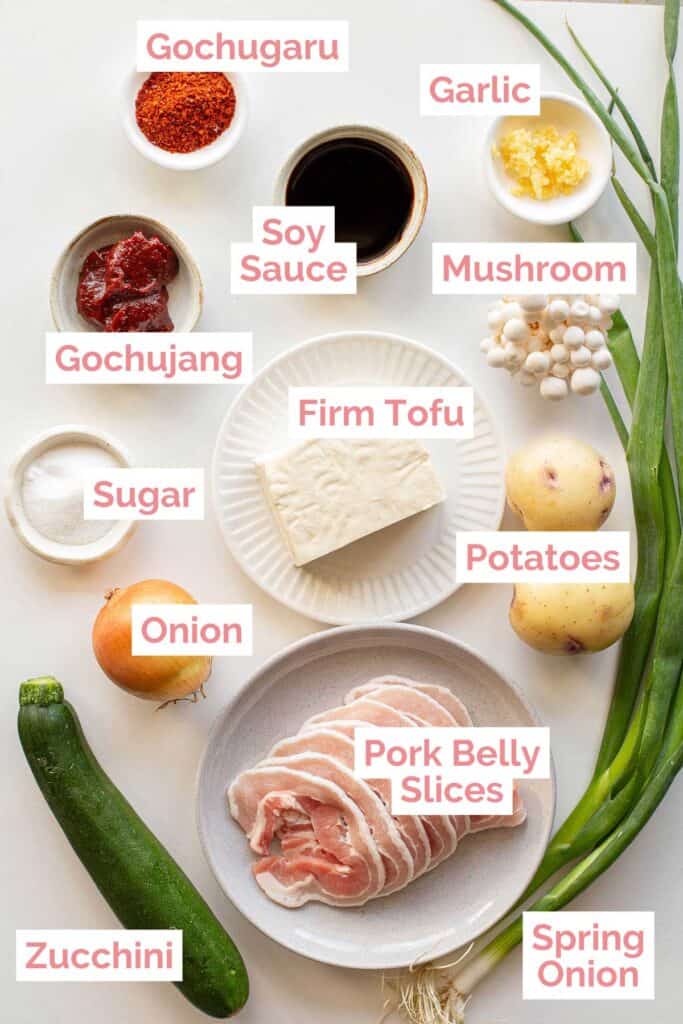
How to Make Korean Spicy Gochujang Stew
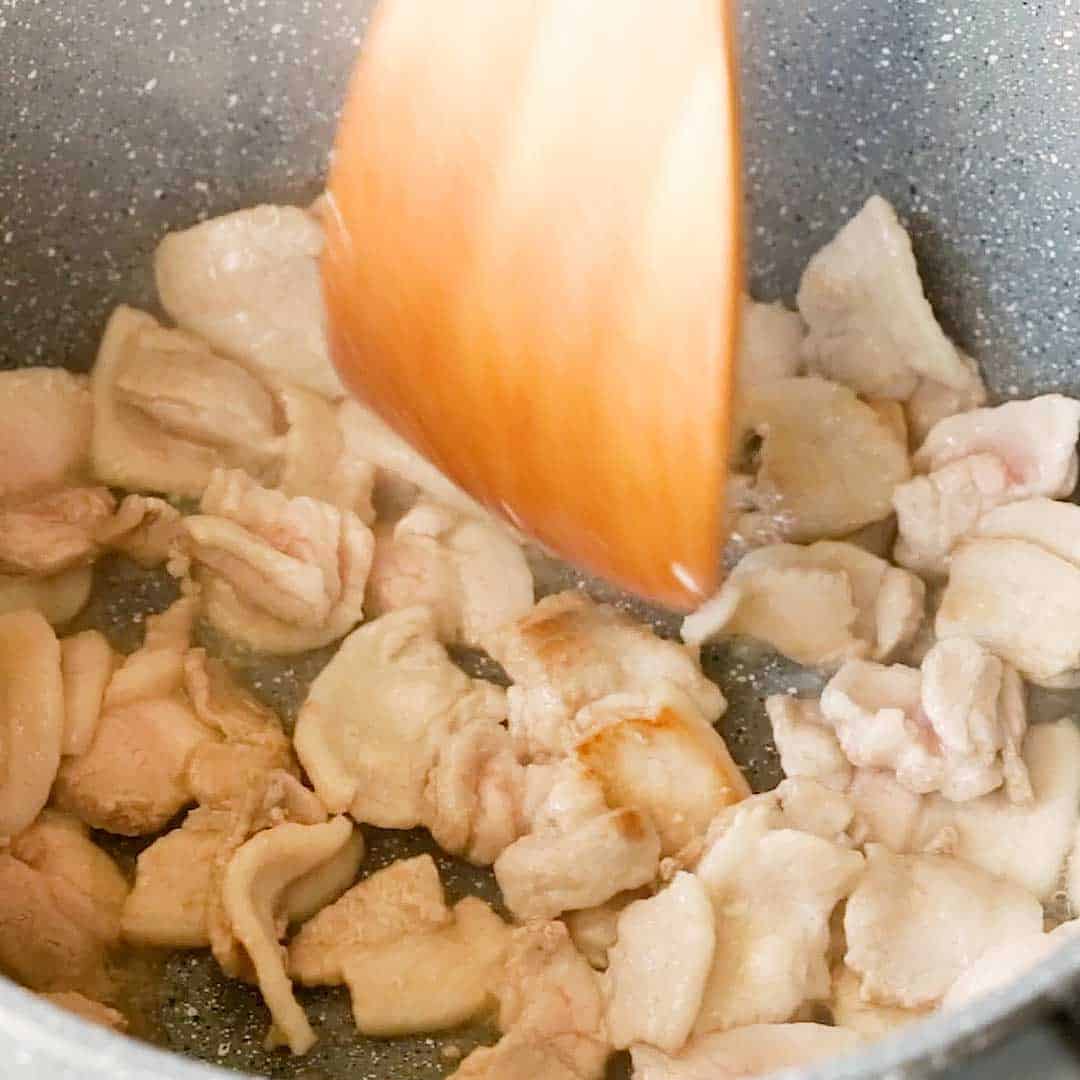
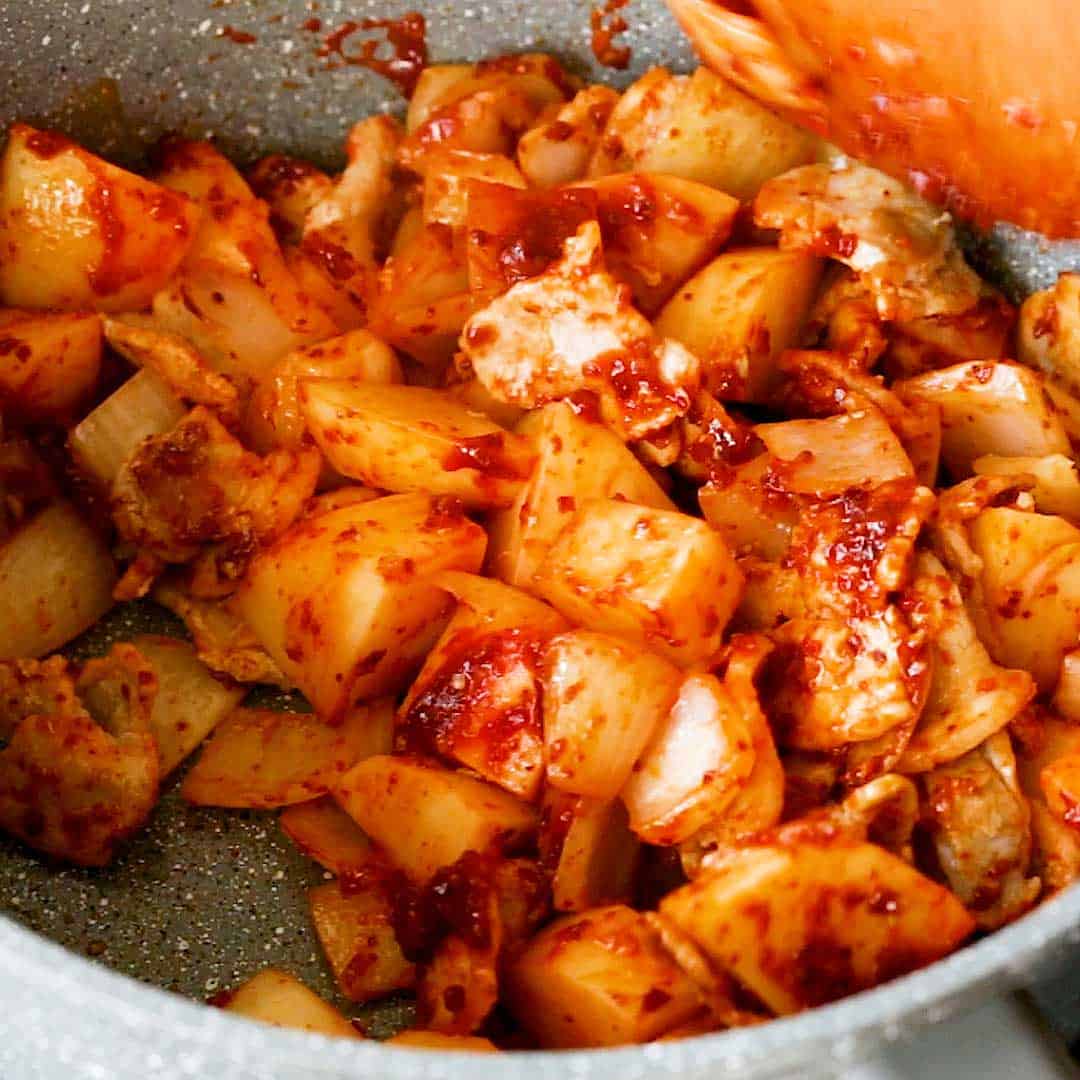
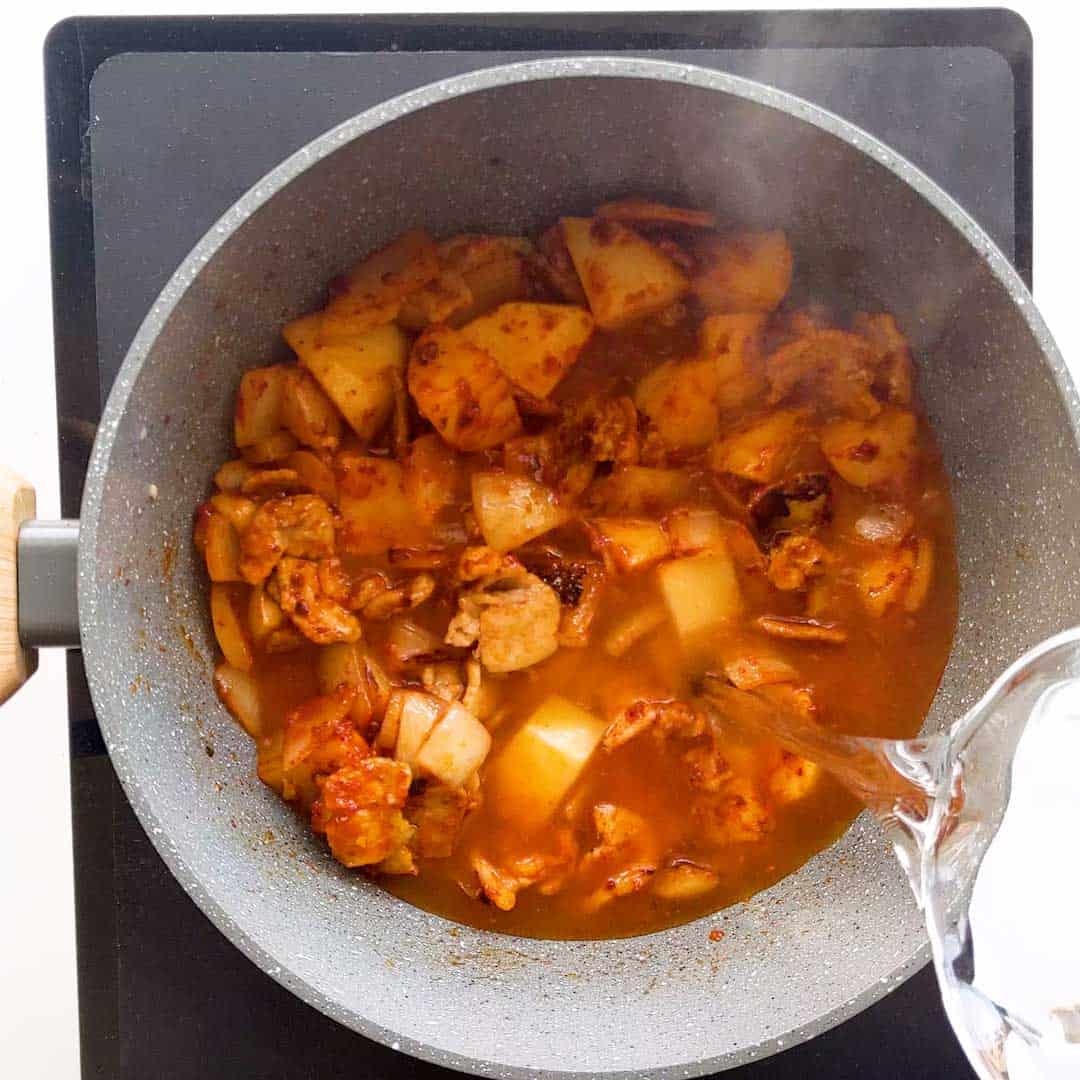
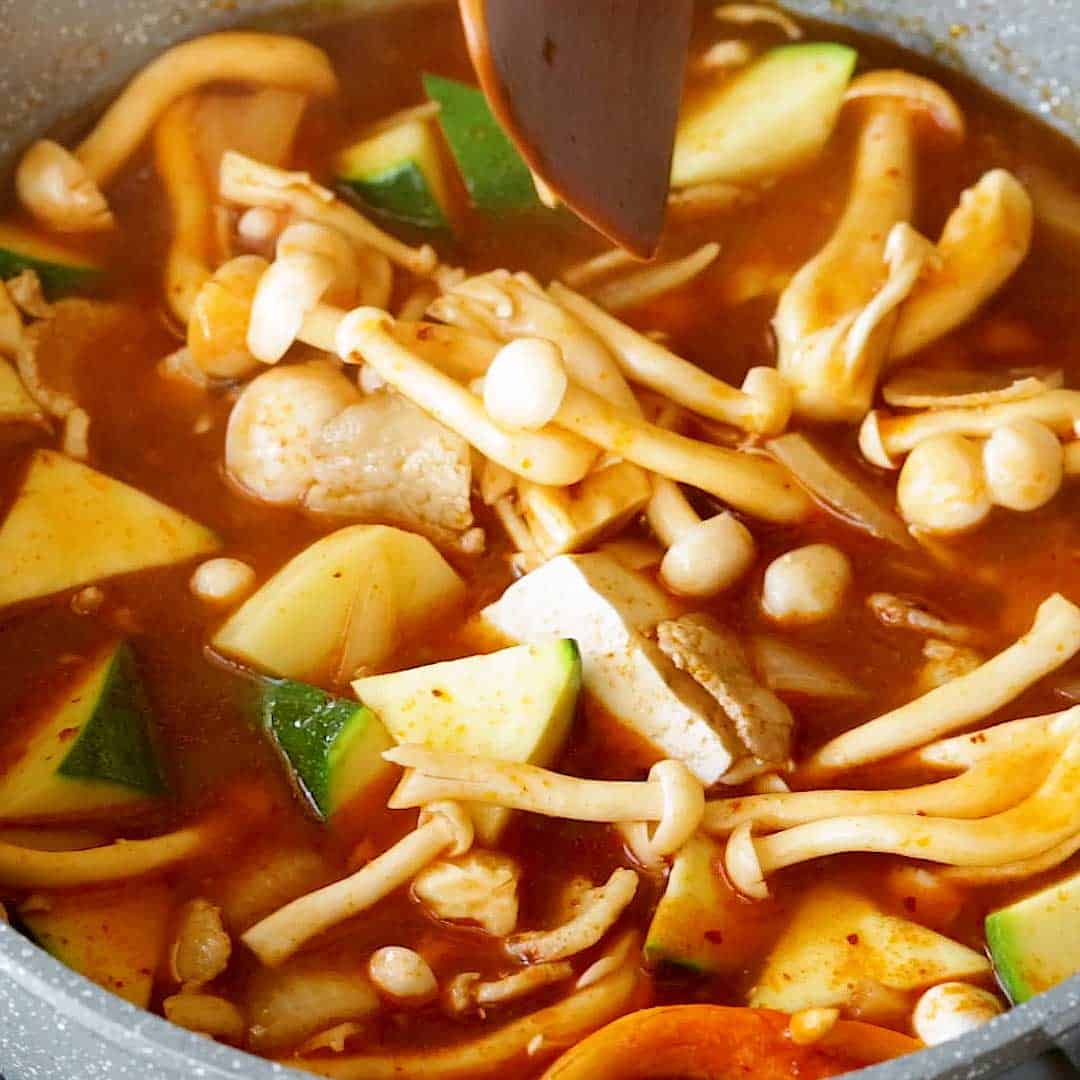
First, gather your ingredients: See recipe card below for measurements.
- Heat the vegetable oil up in a large saucepan over medium high heat. Add your pork belly and fry until browned.
- Add onion and garlic, then quickly fry for a minute. Add your potato next, along with the gochugaru / Korean hot pepper flakes and gochujang / Korean hot pepper paste. Stir fry for a minute or two, making sure everything is well coated.
- Pour over the water and bring to a boil. Next, add in the soy sauce and sugar and cook for a few minutes.
- Finally, add the zucchini, tofu, mushroom and half the spring onion and cook for 5 more minutes or until potato is soft.
- Switch off the heat and serve with a side of rice and banchan such as pickled onion and seasoned spinach. Garnish with remaining spring onion.
Wandercook’s Tips
- Frying – Frying the potatoes and pork belly in the gochujang and gochugaru first helps infuse them with extra flavour while ensuring the potatoes are soft and the pork is cooked through. It also helps hold their shape
- Storage – Leftover gochujang stew will last around 2-3 days in the fridge when stored in an airtight container, or around 2-3 months in the freezer.
- Leftover zucchini and potato? – Make our very popular potato bake or zucchini slice next.
FAQs
Like Korean army stew, gochujang jjigae is often served in the middle of the table so people can help themselves to as much or as little as they like. It’s often served with other banchan (side dishes) such as rice, pickled daikon, seasoned spinach or bean sprout salad.
At home, we love this stew with kkakdugi (radish kimchi) for extra flavour, served with a ramen egg on top!
Gochujang stew is medium in spice. You can adjust this up or down according to your preference with the amount of gochugaru / Korean red pepper flakes – this makes the most amount of different to the heat level.
Variations
- Extra Flavour – Add a teaspoon of doenjang, red miso paste or beef stock to amp up the flavour.
- Extra Refreshing – Add diced cucumber and tomato to the stew, or serve with a small bowl of smashed cucumber salad or oi muchim (Korean spicy cucumbers) on the side.
- Add Tteok – Add a handful of Korean rice cakes (garaetteok) in the last 5 minutes of cooking to make it go even further, similar to tteokbokki stir fry or gungjung tteokbokki.
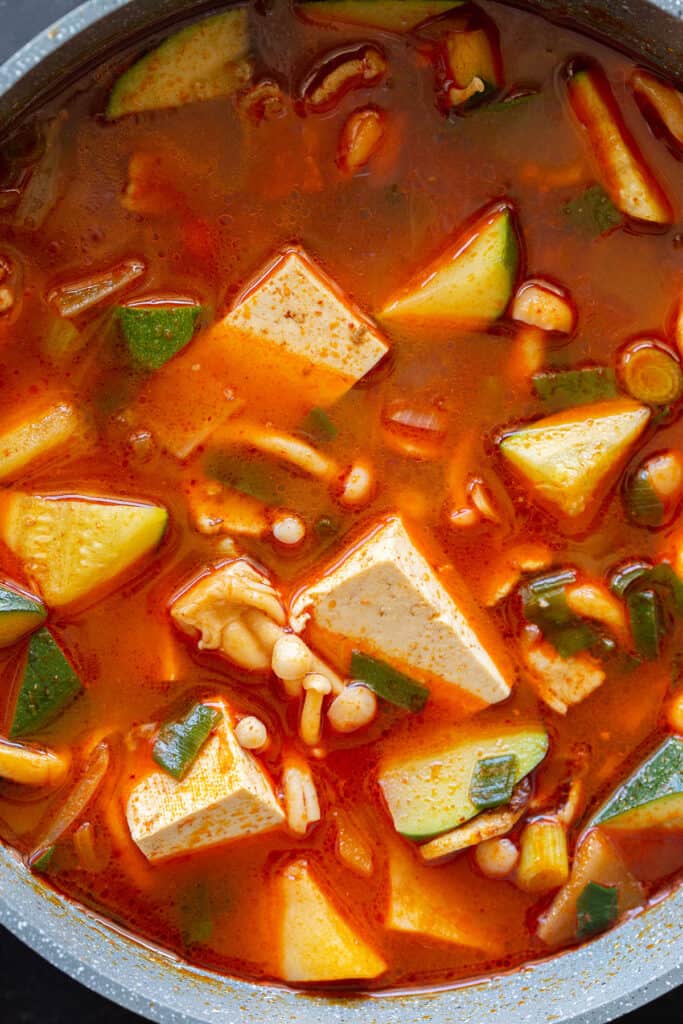
Try these amazing recipes next:
★ Did you make this recipe? Please leave a comment and a star rating below!
Ingredients
- 1 tbsp vegetable oil
- 200 g pork belly 7 oz / around 1 cup, sliced into strips
- 1 onion chopped
- 2 garlic minced
- 2 potatoes chopped
- 1 tbsp Korean hot pepper flakes / gochugaru
- 2 tbsp Korean hot pepper paste / gochujang
- 3 cups water
- 2 tbsp soy sauce
- 1 tbsp sugar
- 1 zucchini chopped
- 300 g firm tofu 10.6 oz
- 1 cup mushrooms 100 g / 3.5 oz such as shimeji, enoki or oyster mushroom
- 1 spring onion sliced thinly
Instructions
- Heat the vegetable oil up in a large saucepan over medium high heat. Add your pork belly and fry until browned.200 g pork belly, 1 tbsp vegetable oil
- Add onion and garlic, then quickly fry for a minute. Add your potato next, along with the gochugaru / Korean hot pepper flakes and gochujang / Korean hot pepper paste. Stir fry for a minute or two, making sure everything is well coated.1 onion, 2 garlic, 1 tbsp Korean hot pepper flakes / gochugaru, 2 tbsp Korean hot pepper paste / gochujang, 2 potatoes
- Pour over the water and bring to a boil.3 cups water
- Next, add in the soy sauce and sugar and cook for a few minutes.2 tbsp soy sauce, 1 tbsp sugar
- Finally, add the zucchini, tofu, mushroom and half the spring onion and cook for 5 more minutes or until potato is soft.1 zucchini, 300 g firm tofu, 1 cup mushrooms, 1 spring onion
- Switch off the heat and serve with a side of rice and banchan such as pickled onion and seasoned spinach. Garnish with remaining spring onion.1 spring onion
Video
Recipe Notes
- Frying – Frying the potatoes and pork belly in the gochujang and gochugaru first helps infuse them with extra flavour while ensuring the potatoes are soft and the pork is cooked through. It also helps hold their shape
- Storage – Leftover gochujang stew will last around 2-3 days in the fridge when stored in an airtight container, or around 2-3 months in the freezer.
- Leftover zucchini and potato? – Make our very popular potato bake or zucchini slice next.
- Extra Flavour – Add a teaspoon of doenjang, red miso paste or beef stock to amp up the flavour.
- Add Tteok – Add a handful of Korean rice cakes (garaetteok) in the last 5 minutes of cooking to make it go even further, similar to tteokbokki stir fry or gungjung tteokbokki.
Nutrition
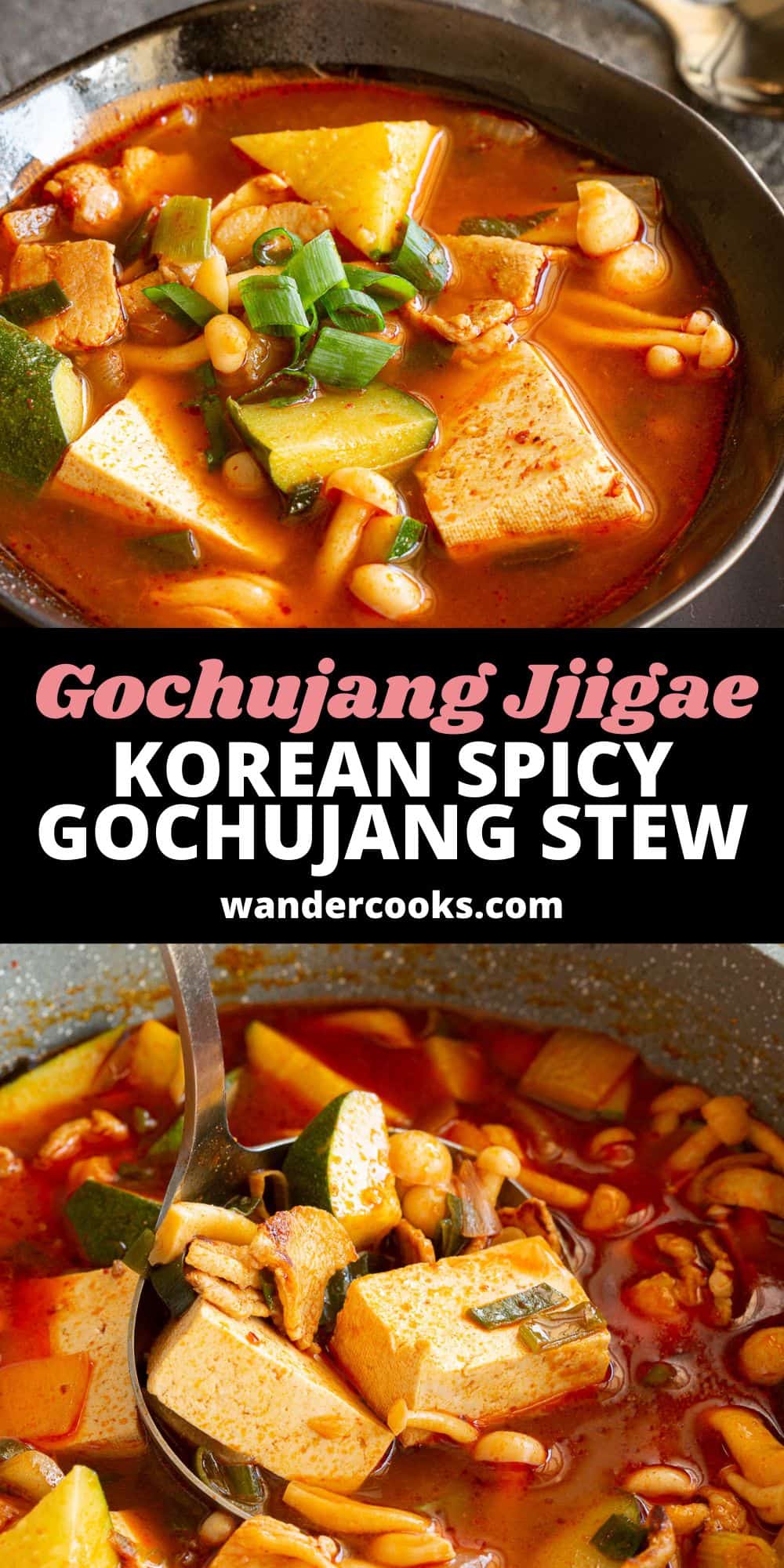

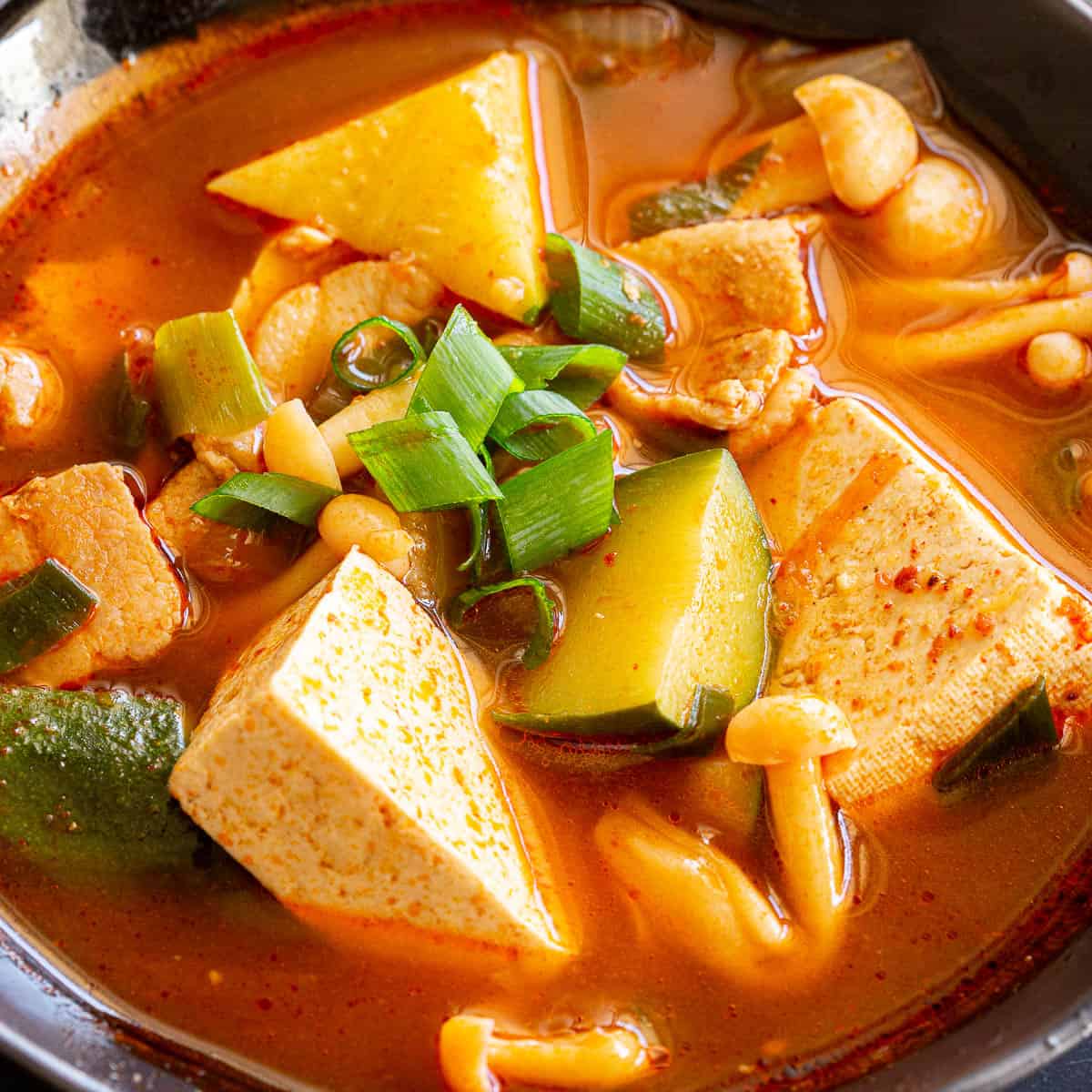



No Comments